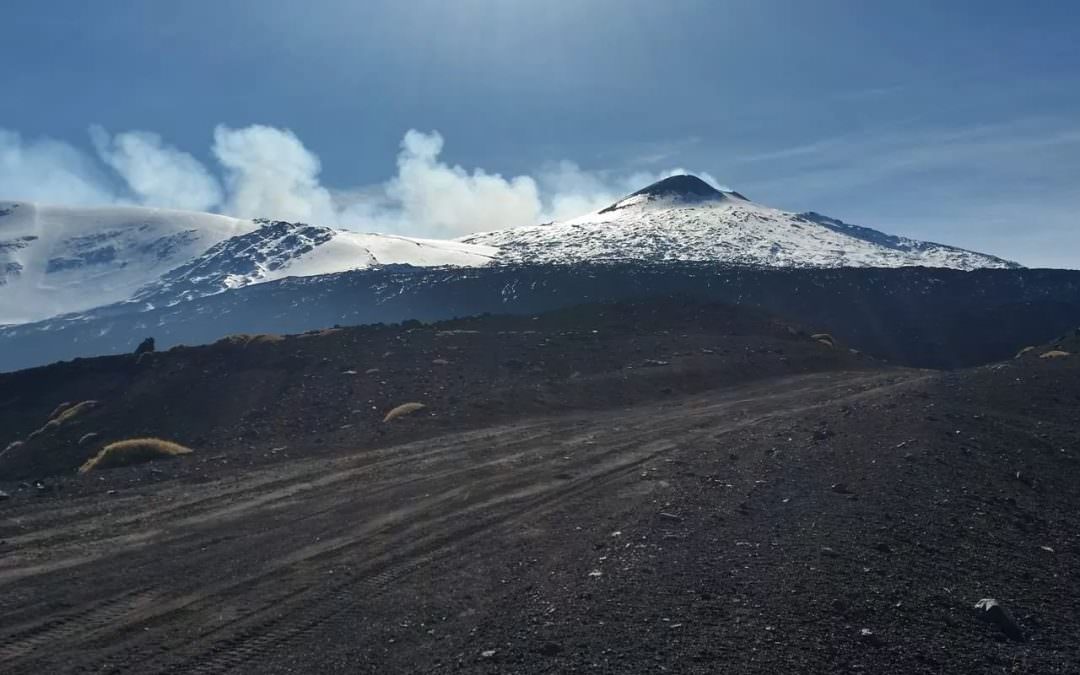Etna National Park, North side
We start from the north area of the volcano along the man-made ring of the so called “wine road”.
Linguaglossa is a small village situated in on the Etna Nord side. Well known for its production of Etna wines and typical Sicilian foods like hazelnut.
From here we take the Mareneveprovincial road, the only access road to the entire north side of Etna. The road climbs up the slopes of the volcano, crossing old paths and donkey trails now and then; the area is very varied, you drive through old lava flows that gradually give way to centuries-old forests.
Pineta (pine forest) Ragabo
As we head south, towards the summit zone, we come across the centuries-old Ragabo pine forest, the largest area of larch trees in Sicily. The wood was probably already used by the Romans for shipbuilding: and since this coniferous species is very rich in resin, the resin was also collected and used to seal the hulls of ships.
The Lava Front of 2002
At an altitude of about 1,100 m, we leave the road and take a path that leads to the lava front of the 2002 eruption. Here, as we stand in front of this huge mass of stone, even though it has long since become hard and cold, one can figuratively imagine what destructive forces nature can have. You can almost feel the power of a lava flow! The eruption covered a distance of about 13 kilometres in the short period of 10 days and fortunately decided to end its course there.
The caves on the north side of Etna: Grotta Corruccio
We continue up to 1395 m and start a new adventure; a short walk into the forest and we enter a secret of the mountain: we visit the lava tunnel Grotta di Corruccio, one of the approximately 190 lava tunnels scattered on Etna. Discovering what is hidden beneath the hard volcanic surface, we leave the surface and head into the twists and turns of the mountain to explore its hidden secrets.
These lava tunnels are formed during eruptions by the flow of boiling hot, still liquid lava, between 1,100 and 700°C. As the lava flows through, the outer layer cools and hardens, forming a kind of shell (crust) that, when cooled, allows the lava that continues to flow inside to maintain a stable temperature. The lava remains hot and liquid, sometimes for kilometres, and continues to flow until it empties the outer shell and forms a cavity. And a new cave emerges.
Piano Provenzana
Unsere Fahrt durch den Pinienwald Ragabo geht weiter, bis wir auf einen Lavafluss treffen, der wörtlich den Wald in zwei Teile geteilt hat. Es ist wieder der Lavastrom von 2002. Wir fahren an ihm entlang, bis wir den Platz erreichen, auf 1.800 m, wo sich der Skilift befindet.
Wir sind in Piano Provenzana, wo die asphaltierten Straßen enden. Von hier aus kann man nur zu Fuß weitergehen oder mit speziellen Geländefahrzeugen.
Von hier aus folgen wir den Lavafeldern und Kratern der großen Knopfleiste der Eruption von 2002 bis zu den letzten Eruptionskegeln, die sich auf etwa 2400 m Höhe gebildet haben.
Wir kommen auch bei den Kratern vorbei, die 1809 entlang derselben Verwerfung entstanden sind, einer der aktivsten am Ätna, der Pernicana-Verwerfung, die heute auch als Nordost-Rift bekannt ist. Diese Verwerfung verursacht Verformungen von 2 bis 4 cm pro Jahr.
Piano delle Concazze und vulkanologisches Observatorium “Pizzi Deneri”
Wir fahren noch weiter auf der nackten Lava, die Vegetation wird immer kahler, in Richtung des nord-östlichen Kraters. Wenn wir den Piano delle Concazze erreicht haben, können wir das Observatorium von “Pizzi Deneri” (2.847 m) sehen.
Wir verlassen die Fahrzeuge und haben das Gefühl uns auf dem Dach der Welt zu befinden, wenn uns nicht der majestätische Riese überragen würde: der Nord-Ost Krater.
Von der Spitze des Pizzi Deneri aus, ist es möglich die Skigegend zu bewundern und den gesamten Nord-Ost Hang, einen großen Teil des nord-östlichen Siziliens bis zu den peloritanischen Bergen, den Küsten Kalabriens und gegen Süden das Löwental – Valle del Leone und selbstverständlich die Gipfelkrater mit dem (ehemals) höchsten, direkt vor uns, der Nord-Ost Krater.
Während wir wieder bergab gehen, in Richtung Skilift, haben wir die Möglichkeit die Krater, die sich 1809 gebildet haben, und einige der Eruptionskegel von 2002 aus der Nähe zu besichtigen. Wenn wir Glück haben können wir die Dämpfe, die aus dem heißen Inneren des Vulkans aufsteigen, sehen und berühren.
Mit diesem Ausflug haben wir eine der neuesten und majestätischsten Formationen des Ätna gesehen.
Bis zum nächsten Abenteuer ????
